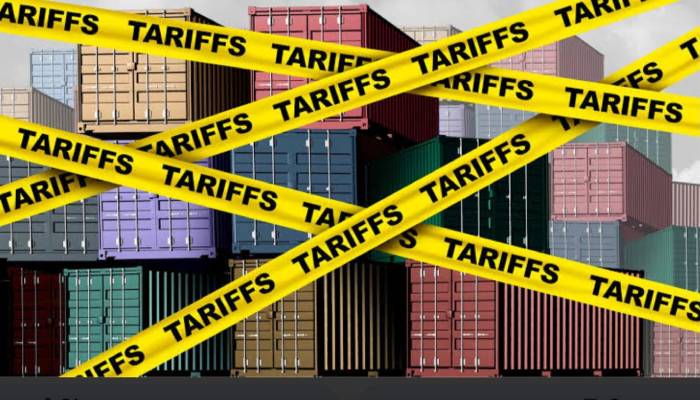Major IT Companies Face Challenges Amid Trump’s Tariff Announcement
President Donald Trump’s latest tariff policies on imports from China, Mexico, and Canada are poised to disrupt the IT industry. Several major tech companies, including Hewlett Packard Enterprise (HPE), Dell, Apple, and Intel, are preparing for significant challenges as tariffs drive up costs, disrupt supply chains, and force them to reconsider pricing strategies.
The tariffs, which target key tech components such as semiconductors, networking equipment, and hardware, are expected to have widespread repercussions. Companies that rely heavily on international manufacturing and imports may see their profit margins shrink while struggling to maintain competitive pricing.
“These tariffs present unforeseen financial headwinds that we must navigate strategically.”
— Antonio Neri, CEO of Hewlett Packard Enterprise
Hewlett Packard Enterprise (HPE): A 20% Stock Plunge and Job Cuts
Among the hardest-hit companies is HPE, whose stock plummeted 20% after the tariff announcement. The company’s Chief Financial Officer, Marie Myers, confirmed that the tariffs would significantly impact HPE’s server business, a critical part of its revenue stream.
“We are proactively working to minimize disruptions by reassessing our supply chain and considering price adjustments,” said Myers.
In an effort to control costs, HPE announced plans to cut 2,500 jobs over the next 18 months. The move comes as the company faces increasing competition from Dell and Super Micro Computer in the AI-server market.
Mark Reynolds, a financial analyst, noted, “HPE’s situation highlights the growing risks that global tech firms face due to shifting trade policies. If these tariffs persist, we may see more IT companies revising their forecasts downward.”
“The new tariffs could force companies to either absorb higher costs or pass them on to consumers, making technology more expensive for everyone.”
— Lisa Parker, Trade Policy Analyst
Dell and Apple: Rising Costs and Market Uncertainty
Dell, another major player in the IT industry, also relies on a global supply chain to manufacture and assemble its products. The new tariffs could increase component costs, particularly for servers and personal computing devices. This could force Dell to either absorb the additional expenses or pass them on to consumers, potentially affecting demand.
Apple, which assembles most of its products in China, faces similar challenges. The tariffs could lead to higher costs for importing iPhones, MacBooks, and other Apple devices into the U.S. If Apple chooses to raise prices to offset these costs, it may risk losing price-sensitive customers.
“Apple has long relied on China for its manufacturing efficiencies,” said Lisa Parker, a trade policy analyst. “These tariffs could push them to rethink their supply chain, but shifting operations is not an overnight solution.”
Apple has already been working to diversify its manufacturing base, with efforts to move some production to India and Vietnam. However, these changes take time, and in the short term, Apple could face margin pressure.
“Supply chain disruptions and increased costs could slow innovation in the tech sector, as companies focus more on survival than R&D.”
— Mark Reynolds, Financial Analyst
Intel and Microsoft: A Supply Chain Balancing Act
Intel, one of the world’s largest semiconductor manufacturers, also faces uncertainty. With many of its manufacturing and assembly operations spread across China and other regions, increased tariffs could lead to higher production costs. Semiconductors are critical components in nearly all modern technology, meaning price hikes in this sector could have ripple effects across the entire industry.
Kevin Mitchell, a supply chain expert, explained, “If semiconductor prices increase due to tariffs, we could see cost spikes in everything from consumer electronics to data centers.”
Microsoft, while primarily a software company, produces hardware such as Surface devices and Xbox consoles. With these products manufactured overseas, Microsoft may need to adjust its pricing model in response to the tariffs.
A Microsoft spokesperson commented, “We are monitoring the situation closely and exploring options to ensure minimal disruption to our customers and partners.”
How the Tech Industry is Responding
With uncertainty looming, IT companies are exploring various strategies to mitigate the impact of these tariffs:
- Supply Chain Diversification: Many companies are accelerating efforts to shift production to countries outside of China, such as Vietnam, India, and Mexico.
- Price Adjustments: Some firms may increase prices to compensate for higher import costs, though this risks reducing demand.
- Cost-Cutting Measures: Companies like HPE have already announced job cuts to streamline operations and maintain profitability.
- Advocacy and Policy Engagement: Industry leaders are likely to lobby for trade negotiations to mitigate the long-term effects of these tariffs.
The Road Ahead for the Tech Industry
The impact of Trump’s tariffs will largely depend on how long they remain in place and whether companies can successfully adapt to the new trade environment. For now, IT giants must balance innovation with economic realities, ensuring they remain competitive while navigating the financial headwinds ahead.
As Mark Reynolds summarized, “These tariffs aren’t just about cost increases; they represent a fundamental shift in global trade dynamics that could reshape the tech industry for years to come.”
If the situation persists, consumers may soon start feeling the effects in the form of higher prices for everything from smartphones to enterprise servers. The coming months will be crucial in determining how the IT industry weathers this storm.



